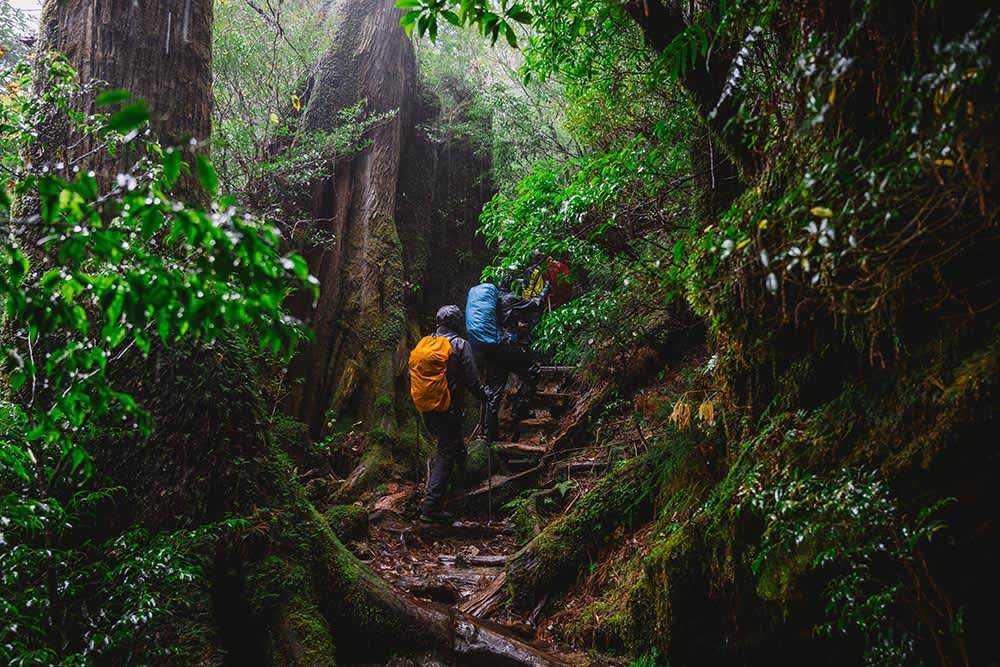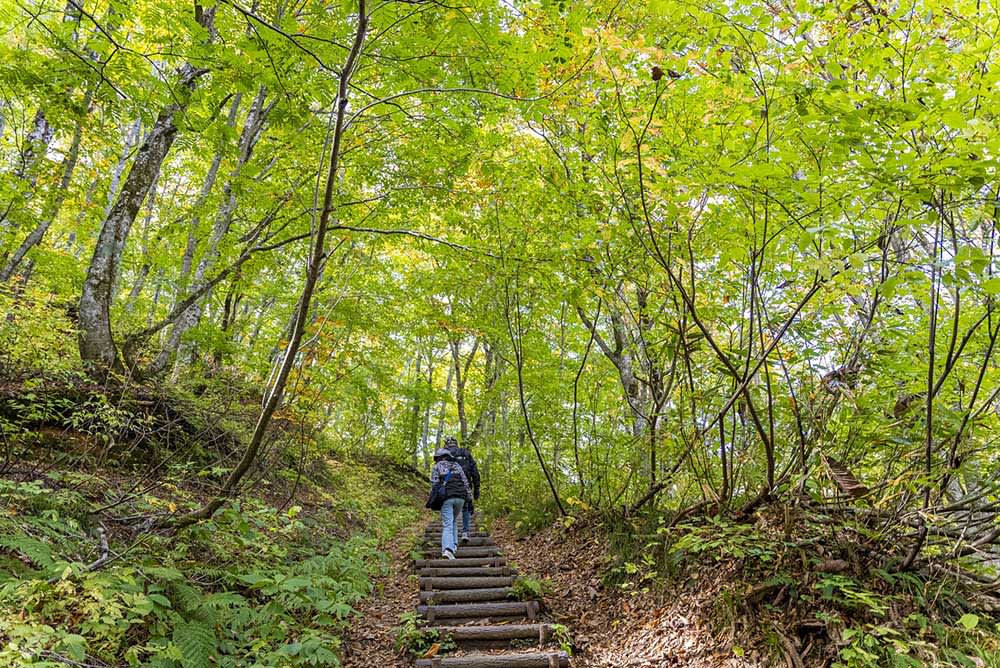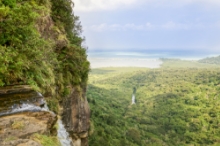
Japan may be well-known for its many priceless cultural heritage sites but fewer are familiar with Japan’s breathtaking natural heritage sites, all of which house precious ecosystems as well as rare and endemic flora and fauna. In 2021, additional sites were added to the UNESCO Natural World Heritage list including Amami-Oshima, Tokunoshima, the Yanbaru Region of Northern Okinawa, and Iriomote Island. For chasers of unforgettable experiences in nature, this list should act like a bucket list for future trips to Japan and for more ideas for outdoor and adventure travel activities, be sure to visit: https://www.japan.travel/en/sports/adventure/
Yakushima, Kagoshima Prefecture

The first to be designated a UNESCO Natural World Heritage Site, Yakushima Island is home to the ancient and towering Yakusugi cedar trees, the oldest of which is estimated to be seven thousand years old. The island’s wet climate has made it a veritable rainforest covered in moss and waterfalls with plenty of hiking and trekking trails to offer. In addition to being Japan’s largest site for nesting sea turtles, the island’s endemic species of deer and monkeys make it the perfect destination for wildlife enthusiasts and photographers. Surprisingly, the island fluctuates between subarctic and subtropical climate which creates extra biodiversity, making its natural ecosystem all the rarer and more precious so it is important to tread carefully and leave only footsteps behind when visiting.
For more information: https://www.japan.travel/en/destinations/kyushu/kagoshima/yakushima/
Shiretoko, Hokkaido Prefecture

Travelers looking for a truly off-the-beaten-track destination should look no further than the Shiretoko Peninsula with its untamed wilderness and striking natural beauty. A feast for the eyes in every season, the Shiretoko National Park sports some breathtaking mountains, coastlines, and undisturbed forests home to rare and native species of deer, bear, and birds of prey.
In the winter, huge ice drifts are able to be explored via dirft ice walking tour and one can even dive below the ice floes with the help of a skilled guide. Those looking to get closer to the wildlife can board coastal cruises to see the native brown bears and Ezo deer or enjoy bird watching to see various raptors and other sea birds. The five lakes of Shiretoko offer plenty of hiking and hidden waterfalls to explore while the long sandbar known as the Notsuke Peninsula allows one to explore the Nemuro Strait.
For more information: https://www.japan.travel/en/spot/2143/
Shirakami-Sanchi, Aomori and Akita Prefectures

The expansive mountain range bordering Aomori and Akita prefectures is home to the Shirakami-Sanchi, a wilderness area which boasts the largest remaining virgin beech forest in East Asia. The area is also home to a variety of wildlife including the Japanese serow, black bears, and over 80 different species of birds. Hikers can enjoy traversing the trails around Lake Juniko while more avid trekkers can make their way up Mt. Shirakami at 1,235 m. In order to protect the delicate ecosystem, travelers are prohibited from picking plants, bringing pets, or disposing of any trash in the Shirakami-Sanchi area.
For more information: https://www.japan.travel/en/sports/hiking/courses/shirakami-sanchi/
Ogasawara Islands, Tokyo

Tokyo is certainly not the first place one would think to look for untouched natural beauty but it is home to the stunning UNESCO World Heritage Ogasawara Islands known for its gorgeous beaches and rare flora and fauna. The main island of Chichijima sports some beautiful swimming beaches such as Miyanohama as well as fun marine activities such as snorkeling, diving, and sea kayaking. Nearby, the uninhabited Minamijima is the Galapagos of Japan and a breeding ground for sea turtles. The island is painstakingly protected by the locals and only 100 people are allowed to visit per day – after of course sterilizing their shoes so as not to disrupt the delicate ecosystem. The only way to access the islands is by overnight ferry from Tokyo aboard the Ogasawara-Maru Ferry but the views that will greet you are well worth the trip.
For more information: https://www.gotokyo.org/en/destinations/izu-and-ogasawara-islands/chichijima-island/
Amami Oshima, Tokunoshima, Yanbaru, Iriomote Island – Kagoshima and Okinawa Prefectures

Located between mainland Kyushu and Okinawa, Amami Oshima is a part of the Amami Gunto National Park with some of the clearest waters and most striking white sand beaches. Kayaking, diving, and snorkeling are all excellent ways to explore the islands beauty and marine life. The island is inhabited by diverse and native wildlife such as the Amami rabbit and Amami Ishikawa’s frog and many sea turtles come to the island to lay their eggs. The rainy subtropical climate makes for a dense and green rainforest as well as large expanses of untouched mangroves. Travelers can also learn more about the native Ryukyu culture and history at Amami Park's folk museum. Neighboring Tokunoshima also offers plenty of rare and distinctive wildlife as well as epic greenery such as its 300-year-old Chinese Banyan trees with branches that can spread up to 40 meters. Tokunoshima also boasts many impressive geological formations such as the famous Ryukyu limestone cliffs.
The largest island in the Yaeyama chain, Iriomote Island is a stunning haven of biodiversity with verdant virgin forests and wildlife that can be found nowhere else on the planet. The island’s mangrove swamps provide an environment rich in flora and fauna accessible by waterways that can be kayaked for an unforgettable experience in nature. The Iriomote cat is the island’s extremely rare species and nighttime sustainable trekking tours are available to try and glimpse this native predator. Pinaisara Falls, Okinawa’s tallest waterfall at 55 meters, is another must-see when visiting the island. The Yanbaru region of northern Okinawa is similarly densely forested with plenty of endemic species of plant and animal life including the endangered Okinawa rail. The Yanbaru forest itself spans around 136 kilometers and is blessed with heavy rainfall maintaining the forest’s striking greenery year-round. The Ministry of the Environment has taken up the preservation cause in this region and designated the area a national park in 2016.
For more information:
https://www.japan.travel/en/japan-magazine/amami-oshima-and-tokunoshima-islands/ https://www.japan.travel/en/japan-magazine/iriomote-island-and-yanbaru-biodiversity-hotspots-japans-southern-ocean/





















































